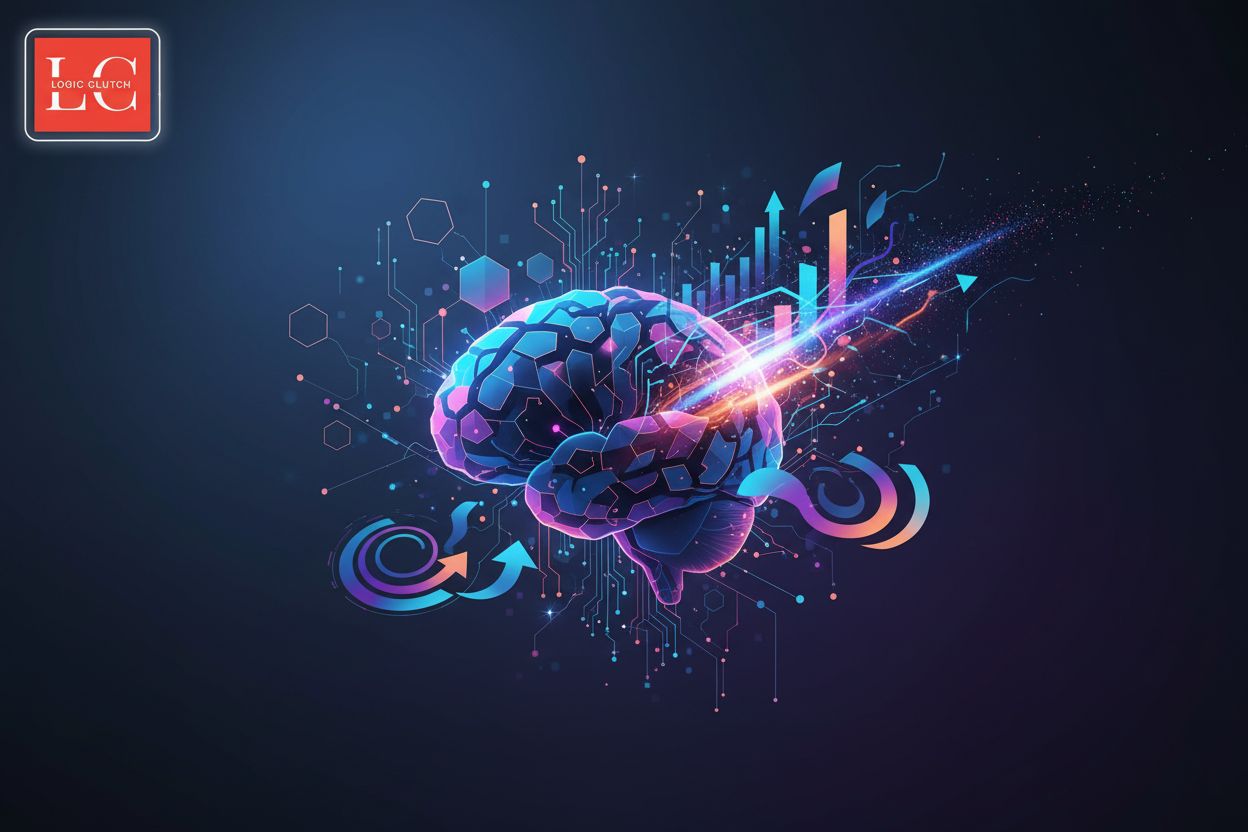Comprehensive Profile of AI Analytics Platforms
TL;DR
Introduction: The Rise of AI Analytics in Business
Alright, let's dive into the world of AI analytics, shall we? It's not just some sci-fi concept anymore, folks. Businesses are really starting to get in on this, and for good reason.
AI analytics in a business context refers to the use of artificial intelligence technologies, such as machine learning and natural language processing, to analyze vast amounts of data, uncover hidden patterns, and generate actionable insights. In today's rapidly evolving business landscape, where data is generated at an unprecedented rate, AI analytics has become indispensable for organizations seeking to gain a competitive edge, optimize operations, and make more informed strategic decisions. It's about moving beyond traditional reporting to predictive and prescriptive insights that drive tangible business outcomes.
- ai is making a huge splash. We are seeing ai analytics platforms changing how data is handled and decisions are getting made.
- Think faster operations. Better customer connections. And insights that actually help you plan ahead.
- According to insight7.io, companies are using AI to boost efficiency, amp up customer engagement, and make smarter choices. (Companies Are Using AI to Make Faster Decisions in Sales and ...) Top 20 AI Tools And Platforms For 2024
So yeah, ai analytics is here to stay. And its changing how businesses everywhere work. Get ready for the next chapter.
Key Features and Capabilities of AI Analytics Platforms
Okay, so you're wondering about what these ai analytics platforms can actually do, right? It's more than just spitting out numbers; it's about real-world insights. Trust me, it's pretty cool.
- Core ai Functionalities:
- These platforms leverage machine learning to identify patterns and trends in data that humans might miss. Think of it like this: retailers can use this to analyze purchase histories and predict when you might need new running shoes. (How to tell when you need new running shoes - The Runners Shop)
- Natural language processing (nlp) helps analyze customer feedback from surveys, social media, and support tickets. For example, hospitals can use it to analyze patient feedback and identify areas for improving patient satisfaction, like understanding common pain points in the emergency room.
- Seamless data flow is essential. Imagine all your customer interactions in salesforce automatically feeding into the ai analytics platform. This helps sales teams identify top prospects and personalize their approach.
- Automated report generation saves time and effort. Financial analysts can generate detailed performance reports with just a few clicks.
Leading AI Analytics Platforms: A Detailed Look
Okay, let's talk about OpenAI's GPT-4. I know, I know, another ai platform, but hear me out – this one's kinda different. It is not just a chatbot, it’s a seriously powerful tool, and folks are finding some pretty wild uses for it. What makes it so powerful is its advanced understanding of context and its ability to generate highly coherent and creative text, leading to some pretty innovative applications.
- Text Generation: Forget those robotic-sounding articles. GPT-4 can crank out human-like text for everything from blog posts to complex reports. Imagine – a marketing team using it to draft engaging ad copy, or a law firm automating the initial drafts of legal documents.
- Data Analysis: It can dig into data and pull out insights that would take a human analyst hours to find. Think of a retail chain using it to analyze sales data and predict which products will be hot sellers next season by identifying subtle trends and correlations.
- Customer Engagement: Hospitals are using GPT-4 to automate appointment reminders and answer basic patient questions, freeing up staff to focus on more critical tasks.
So, how is this impacting the real world, beyond just churning out articles?
- Healthcare: Imagine a rural clinic using GPT-4 to help diagnose patients. A doctor inputs symptoms, and the ai platform suggests potential conditions and necessary tests. It's important to remember that GPT-4 acts as a supportive tool for diagnosis, not a replacement for medical professionals.
- Finance: Banks are using GPT-4 to detect fraudulent transactions in real-time, flagging suspicious activity for human review.
- Education: Students can use GPT-4 to get help with homework, or teachers can use it to grade papers.
Now, it is not all sunshine and roses. There are definitely ethical issues to consider – like making sure the ai isn’t biased or spreading misinformation. It is important to remember, ai is a tool, and it is only as good as the person wielding it.
Industry-Specific Applications of AI Analytics
Okay, so let's get real about ai analytics in different industries. It's not a one-size-fits-all deal, and that's a good thing. We are seeing some pretty cool stuff happening when you tailor ai to the specific problems these sectors face.
- Healthcare: Predictive analytics is like a crystal ball for doctors – it can spot potential health risks early. For example, maybe it can highlight patients who are likely to develop complications after surgery, allowing for preventive care. Plus, virtual health assistants are offering support to patients, guiding them through everything from medication reminders to appointment scheduling, to answering frequently asked questions about common ailments and providing basic health information.
- Finance: Fraud detection platforms are the unsung heroes, analyzing transactions in real-time and flagging anything suspicious. Which ultimately saves banks a ton of money. And ai-powered customer insights? They're helping banks understand their clients better, offering personalized services that build loyalty. For instance, a bank might use these insights to offer a tailored loan product to a client who has demonstrated a need for it, or provide personalized investment advice based on their risk tolerance.
- Digital Transformation: Forget generic content, user-generated content is being used to create personalized experiences. When combined with AI, user-generated content can be analyzed to understand individual preferences and behaviors, allowing for the creation of highly targeted and relevant content, marketing messages, and product recommendations. Plus, ai is handling customer support and content creation, which frees up staff to focus on bigger strategic initiatives.
You know, the cool thing about ai in healthcare is not just about efficiency, it's about improving lives. For example, hospitals are using ai to predict patient flow, optimizing staffing levels and reducing wait times.
According to a 2024 report, hospitals using predictive analytics saw a 15% reduction in patient wait times.
Imagine not having to sit in a waiting room for hours!
Now, it is not all sunshine and roses. Ethical considerations are a big deal, we're talking about sensitive patient data, so security and privacy are paramount.
Next up, let's switch gears and see how ai analytics platforms are streamlining digital transformation efforts across industries.
Benefits of Implementing AI Analytics Platforms
Alright, so you're thinking about implementing ai analytics platforms? Good move! It's not just hype; these things can seriously boost your business.
Improved Decision-Making: With ai, you're not just guessing. You are getting real, hard data to back up your strategic plans.
- For example, instead of relying on hunches, you can use predictive analytics to understand market trends and customer behavior. AI analytics facilitates better inventory management for retailers by forecasting demand more accurately, and it helps spot financial risks early by identifying unusual patterns in financial data that might indicate potential fraud or market downturns.
Enhanced Customer Engagement: Ever feel like you're talking at your customers, not with them? ai changes that.
- You can use natural language processing to analyze customer feedback and tailor experiences accordingly; for instance, personalized recommendations or automated support that actually solves problems. A concrete example of automated support solving problems could be a chatbot that can successfully guide a customer through troubleshooting a technical issue without needing human intervention.
Increased Operational Efficiency: Who doesn't want to do more with less? ai helps cut down on wasted time and effort.
By automating complex tasks, companies can streamline processes and reduce manual analysis, according to insight7.io. Top 20 AI Tools And Platforms For 2024
Think about hospitals using ai to predict patient flow and optimize staffing. No more crazy long wait times, right?
So, what is next?
Conclusion: Shaping a Smarter and More Efficient Future with AI Analytics
So, ai analytics—it is not just for the big guys anymore. But how do you make sense of it all?
- Adoption is key; you can't grow without new tools. Successful adoption means not just acquiring the technology, but also ensuring your team is trained and comfortable using it, and that it's integrated into existing workflows to maximize its impact.
- Data is your friend; use it to automate processes like customer segmentation, predictive maintenance, or even content personalization – even if you think it's not possible.
- Innovation is a must; make sure you can make decisions with your new data. AI analytics fosters innovation by revealing new opportunities and insights, enabling businesses to pivot quickly and make data-driven decisions that lead to novel products, services, or business models.
The role of ai in 2024 is pretty clear, you know. Companies need it! A hospital can now use ai to guide their staff and use data to reduce patient wait times. Seems like a no brainer, right?
Investing in ai and nurturing a skilled workforce is what it will takes for the future.





